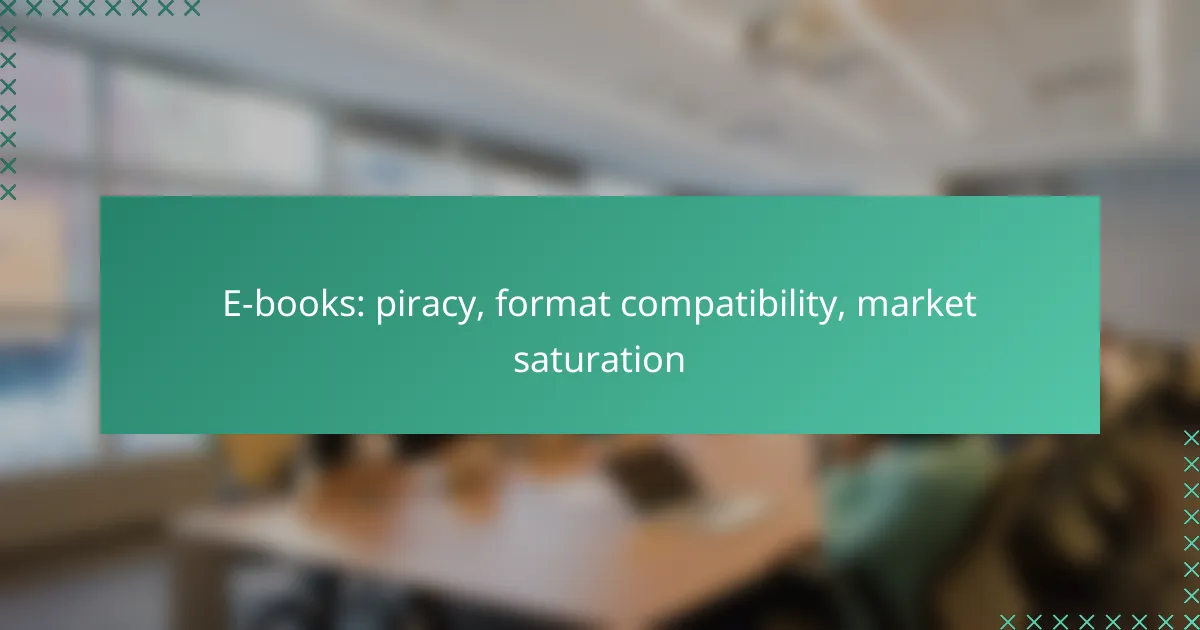The rise of e-books has brought both opportunities and challenges, particularly regarding piracy, format compatibility, and market saturation. Publishers and authors are exploring various strategies to combat piracy while ensuring their works are accessible across different devices through compatible formats like EPUB, MOBI, and PDF. As the e-book market becomes increasingly saturated, understanding consumer preferences and adapting to competition is essential for maintaining visibility and profitability.
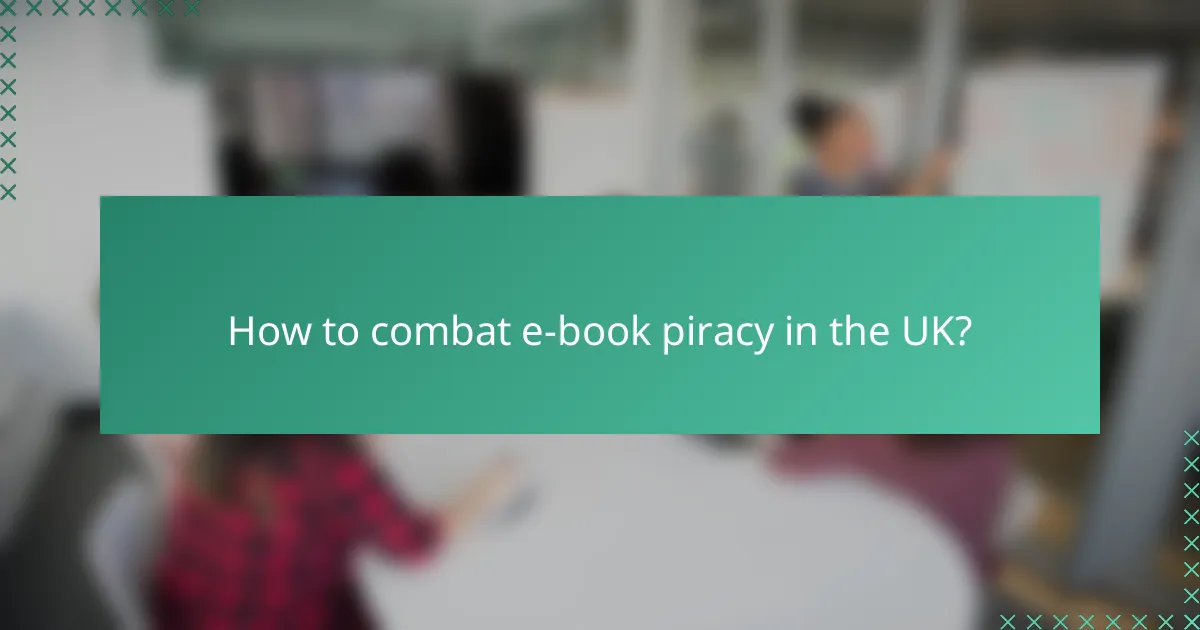
How to combat e-book piracy in the UK?
To combat e-book piracy in the UK, publishers and authors can implement a combination of technological, legal, and educational strategies. These approaches aim to protect intellectual property while informing consumers about the implications of piracy.
Digital Rights Management (DRM) solutions
Digital Rights Management (DRM) solutions are tools that help control how e-books are accessed and shared. By encrypting files and restricting copying or printing, DRM can deter unauthorized distribution. However, it may also limit legitimate users’ flexibility, so striking a balance is crucial.
Common DRM systems include Adobe Content Server and Amazon’s Kindle DRM. Each has its own set of features and restrictions, so publishers should evaluate which system aligns best with their distribution goals and audience needs.
Legal actions against infringers
Taking legal action against e-book piracy can be an effective deterrent. Publishers can issue takedown notices to websites hosting pirated content or pursue litigation against repeat offenders. However, this approach can be costly and time-consuming, so it’s often used as a last resort.
In the UK, the Copyright, Designs and Patents Act provides a legal framework for addressing copyright infringement. Understanding these laws can help rights holders navigate the complexities of enforcement.
Consumer education on piracy risks
Educating consumers about the risks associated with e-book piracy is essential for fostering a culture of respect for intellectual property. This can include highlighting the potential legal consequences and the negative impact on authors and publishers.
Strategies for consumer education may involve social media campaigns, blog posts, or partnerships with educational institutions. By raising awareness, publishers can encourage readers to support legitimate channels for e-book purchases.
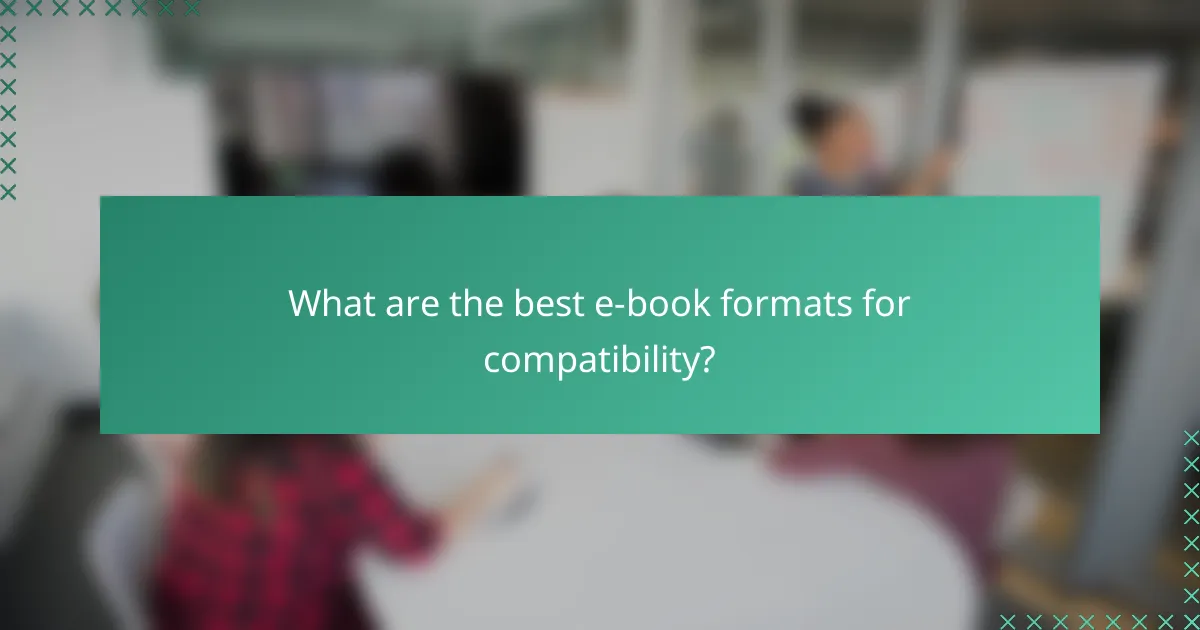
What are the best e-book formats for compatibility?
The best e-book formats for compatibility include EPUB, MOBI, and PDF, each serving different devices and purposes. Choosing the right format depends on the device you plan to use and the features you need, such as reflowable text or fixed layouts.
EPUB format advantages
EPUB is widely regarded as the most versatile e-book format, compatible with most e-readers except for Amazon’s Kindle. Its advantages include reflowable text, which adjusts to different screen sizes, and support for multimedia elements like audio and video.
Additionally, EPUB files can be easily converted to other formats, making them a flexible choice for authors and readers alike. Many libraries and online platforms offer EPUB books, enhancing accessibility.
MOBI format for Kindle devices
MOBI is specifically designed for Amazon’s Kindle devices, making it the go-to format for Kindle users. It supports features like bookmarks, annotations, and a built-in dictionary, enhancing the reading experience.
However, MOBI files are less compatible with non-Kindle devices, which limits their use outside the Amazon ecosystem. If you primarily read on a Kindle, using MOBI ensures optimal performance and access to Kindle-specific features.
PDF format limitations
PDF is a widely used format that preserves the original layout of documents, making it ideal for manuals and textbooks. However, its limitations include poor reflowability on smaller screens, which can hinder readability on e-readers and mobile devices.
Additionally, PDFs often lack the interactive features found in EPUB and MOBI formats, making them less suitable for e-books that require dynamic content. For optimal compatibility, consider using PDF for fixed-layout documents rather than standard e-books.
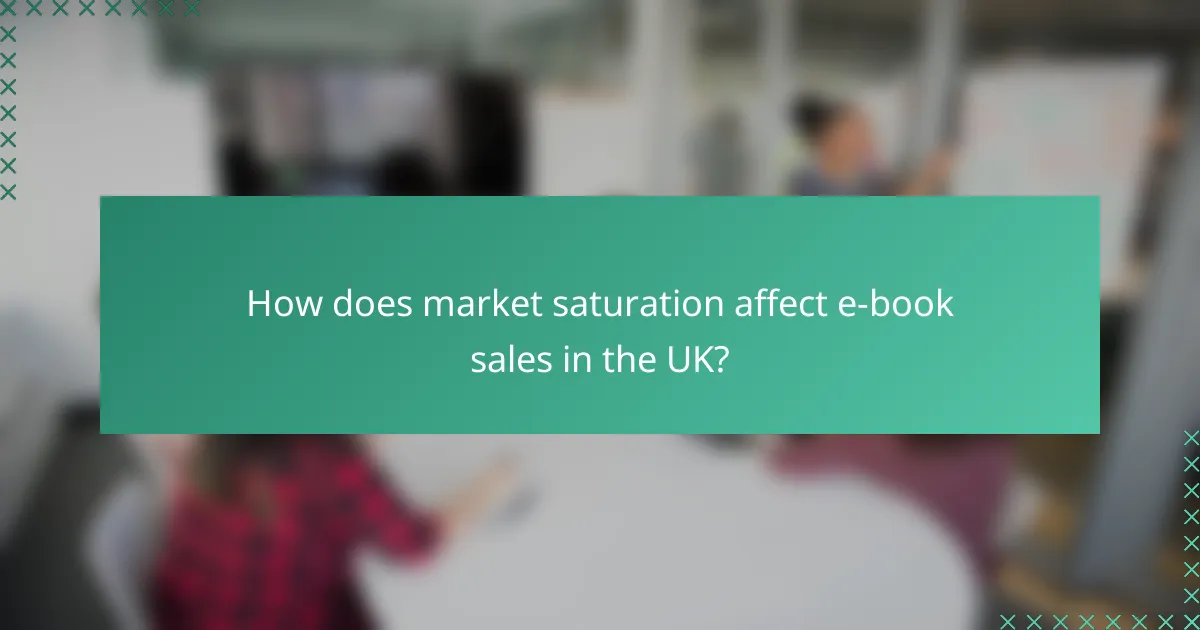
How does market saturation affect e-book sales in the UK?
Market saturation in the UK e-book industry leads to increased competition, impacting sales dynamics and pricing strategies. With numerous titles available, authors and publishers must adapt to shifting consumer preferences to maintain visibility and profitability.
Increased competition among authors
As more authors enter the e-book market, competition intensifies, making it challenging for individual titles to stand out. Established authors may face pressure from new voices, while emerging writers must find unique angles or niches to attract readers.
To navigate this competitive landscape, authors can leverage social media, engage with readers through newsletters, and participate in online communities. Building a personal brand can help differentiate their work in a crowded market.
Impact on pricing strategies
Market saturation often leads to aggressive pricing strategies as authors and publishers seek to entice readers. E-books may be priced lower than print editions, with many titles available at discounts or promotional rates to capture attention.
Authors should consider experimenting with pricing models, such as offering the first book in a series for free or using limited-time discounts. Monitoring competitor pricing can also provide insights into effective strategies to maximize sales.
Consumer preferences shifting
As the e-book market saturates, consumer preferences evolve, influencing purchasing decisions. Readers may gravitate towards genres that are currently trending or seek out specific themes and formats that resonate with their interests.
To stay relevant, authors should regularly engage with their audience to understand changing tastes and preferences. Conducting surveys or analyzing sales data can help identify what readers are looking for, allowing authors to tailor their offerings accordingly.
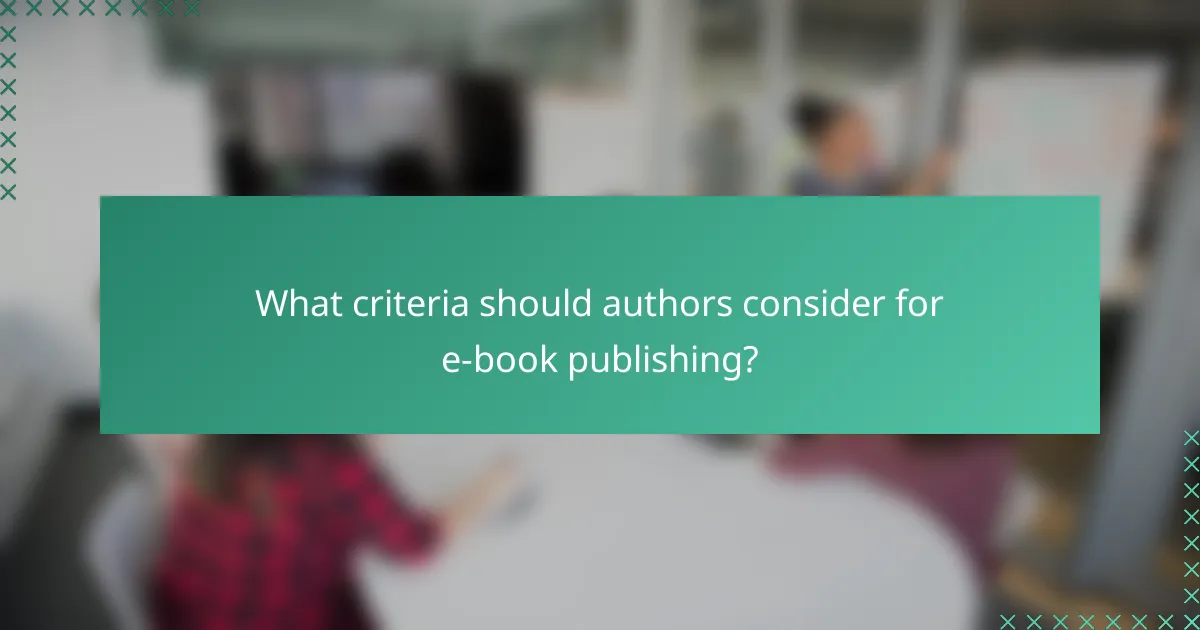
What criteria should authors consider for e-book publishing?
Authors should consider their target audience, distribution platforms, and the overall market landscape when publishing e-books. These factors will significantly influence the reach and success of their work.
Target audience analysis
Understanding the target audience is crucial for effective e-book publishing. Authors should identify demographics such as age, interests, and reading habits to tailor their content and marketing strategies accordingly.
Conducting surveys or utilizing social media analytics can provide insights into potential readers. This information helps in crafting engaging content that resonates with the audience, ultimately boosting sales.
Choosing the right distribution platforms
Selecting the appropriate distribution platforms is vital for maximizing an e-book’s visibility. Popular options include Amazon Kindle, Apple Books, and Google Play Books, each with unique features and audience reach.
Authors should evaluate factors such as royalty rates, ease of use, and promotional tools offered by each platform. For instance, Amazon typically offers higher visibility but may have lower royalty rates compared to other platforms. It’s essential to balance reach and profitability when making a choice.

What emerging trends are shaping the e-book market?
Emerging trends in the e-book market include the rise of subscription services, the integration of multimedia elements, and the growth of self-publishing platforms. These trends are reshaping how readers access content and how authors distribute their work.
Growth of subscription services like Kindle Unlimited
Subscription services such as Kindle Unlimited are transforming the e-book landscape by providing readers with access to vast libraries for a monthly fee. This model allows users to explore a wide range of genres without the commitment of purchasing individual titles.
Authors and publishers benefit from these platforms through increased visibility and potential royalties based on page reads. However, competition is fierce, and authors must market their work effectively to stand out in a crowded marketplace.
Integration of multimedia elements
Many e-books now incorporate multimedia elements such as audio, video, and interactive graphics, enhancing the reading experience. This integration allows for a more immersive approach, particularly in educational materials and children’s books.
While multimedia can engage readers, it also raises considerations regarding file size and compatibility across devices. Authors should ensure that their e-books are optimized for various platforms to reach a broader audience.
Rise of self-publishing platforms
The rise of self-publishing platforms has empowered authors to bypass traditional publishing routes, allowing them to publish their work directly to consumers. Services like Amazon’s Kindle Direct Publishing and Smashwords enable writers to retain more control over their content and royalties.
However, self-publishing requires authors to take on additional responsibilities, including marketing and distribution. Writers should be prepared to invest time and resources into promoting their e-books to achieve success in a saturated market.
